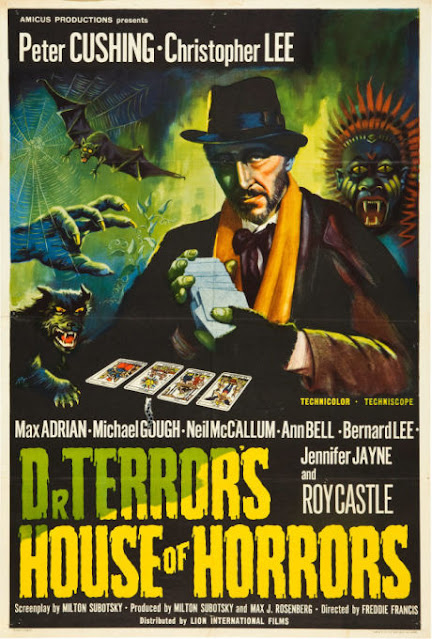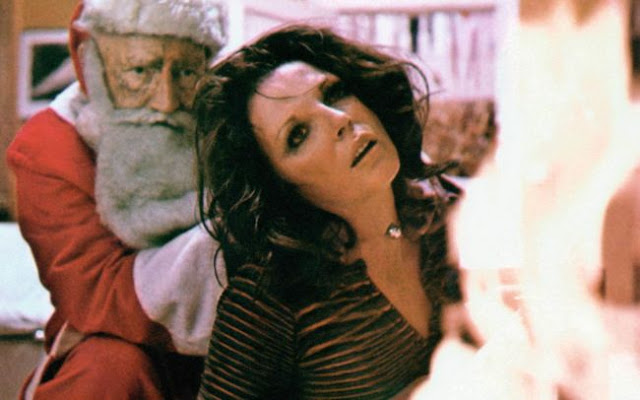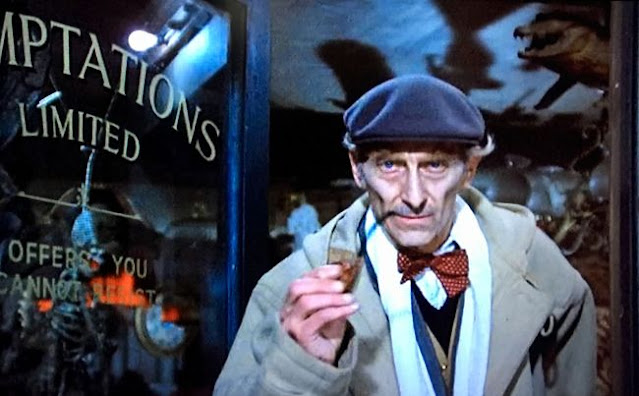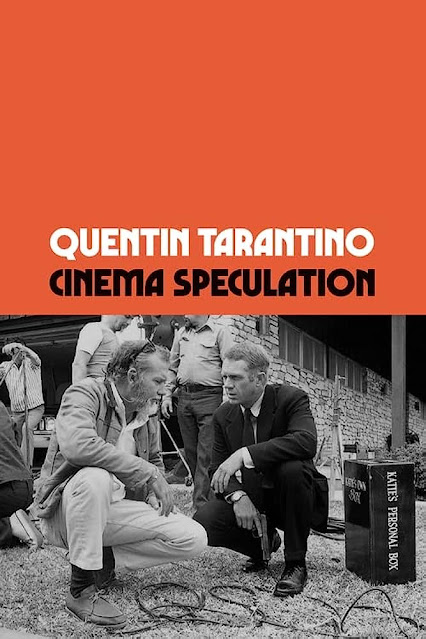The Amicus Horror Anthologies
Although less well known than its rival Hammer, Amicus Productions left its own mark on the horror genre during the peak years of the British horror film in the 1960s and 1970s. Amicus's trademark was the anthology or portmanteau film, one comprised of four or five horror tales all linked by a framing story and often concluding with a revelation or a surprise pay-off.
Amicus was much more short-lived than Hammer, being formed in the early 1960s, and only lasting for around a decade and a half until the late 1970s. Unlike Hammer, it was a speciality studio almost from the beginning, focusing on horror and fantasy subjects. But Amicus films usually rejected traditional gothic horror and mostly used modern day settings with a less fantastical air than Hammer's.
Initially the Amicus films used established horror stars, but their casting became more ambitious as they progressed. This was aided by the economics of making this type of film. Each actor would only be working for a relatively brief period and filming would take place in a studio close to London with little or no location filming. This made it possible to pay the actors reasonable rates without significantly interfering with their other work. There was also a contraction in film production in Britain in the early 1970s, following the boom years of the '60s, meaning that there were now more famous actors than there were films for them to star in.
The stories often ended with a twist and even a moral of sorts. Anyone who misbehaves in one of these films is sure to come to an unpleasant end. Sometimes, even thinking about doing something immoral is enough to damn you in an Amicus film.
Torture Garden (1967)
Torture Garden was again directed by Freddie Francis and this time written by Psycho author Robert Bloch from his own stories. The linking story is effective, if a little hammy, but this film is let down a bit by some unmemorable stories.
The House That Dripped Blood (1970)
Asylum (1972)
This one stars Richard Todd as a man who murders his wife (Sylvia Sims) and then finds himself menaced by his victim's dismembered body parts. Peter Cushing approaches Barry Morse's tailor with a request to make a suit from a unique material that must only be sewn after midnight. Charlotte Rampling has a troublesome best friend in Britt Ekland, and Herbert Lom is trying to give life to a miniature robot in his own likeness.
Amicus were starting to recruit some of Britain's former film stars of the 1950s and early '60s now, with Richard Todd and Sylvia Sims here rubbing shoulders with horror stars Cushing and Lom and faces of the '70s Britt Ekland and Charlotte Rampling.
From Beyond the Grave (1973)
So those are all seven of the Amicus horror anthologies.
In the 1980s, American cinema picked up the anthology format, producing horror films like Creepshow (1982), After Midnight (1989), the western anthology Grim Prairie Tales (1990) (which should win an award for imaginative titling), and Cat's Eye (1985), another feline horror with a co-producer credit for Milton Subotsky.
The company was founded by two expatriate Americans, Milton Subotsky and Max J. Rosenberg. Subotsky worked on the creative side, often writing as well as producing the films, while Rosenberg was more of a dealmaker and handled the firm's business side.
Despite their rivalry and their different styles of horror film, Hammer and Amicus were quite closely connected by overlaps in personnel. Ironically, it was Milton Subotsky who was partly responsible for Hammer's success in the horror field, having first proposed to them the idea of making a new version of Frankenstein - something that Hammer took up and ran with to enormous success.
 |
| The first in Amicus's series, "Dr. Terror's House of Horrors" |
Amicus's horror anthologies were partly inspired by the 1945 Ealing Studios thriller Dead of Night. Like the Amicus films, Dead of Night involves five separate stories set within a linking narrative. The main characters each tell of their strange experiences, involving premonitions, a haunted mirror, golfing ghosts and, most famously, a possessed ventriloquist's dummy. Ealing didn't pursue the format any further, but Amicus had obviously paid attention. The company made seven horror anthologies between 1965 and 1973, beginning with Dr. Terror's House of Horrors.
Like Dead of Night, each of the Amicus films would have a linking narrative where the main characters would often be brought together in the same place. This could be a railway carriage (in Dr. Terror's House of Horrors), a crypt (Tales from the Crypt), a fairground sideshow (Torture Garden) or a lift (The Vault of Horror). In others, the stories would be more loosely linked by the same place; a house with a traumatic history in The House That Dripped Blood, a psychiatric institution in Asylum, or an old antiques shop in From Beyond the Grave.
Initially the Amicus films used established horror stars, but their casting became more ambitious as they progressed. This was aided by the economics of making this type of film. Each actor would only be working for a relatively brief period and filming would take place in a studio close to London with little or no location filming. This made it possible to pay the actors reasonable rates without significantly interfering with their other work. There was also a contraction in film production in Britain in the early 1970s, following the boom years of the '60s, meaning that there were now more famous actors than there were films for them to star in.
All of this meant that Amicus was able to build some unusually strong casts. Their stars ranged from traditional horror names (Peter Cushing, Christopher Lee, Donald Pleasence, Patrick Magee) to fading British film stars (Richard Todd, Diana Dors, Ian Hendry, Michael Craig, Glynis Johns), 1970s glamourpusses (Joan Collins, Britt Ekland, Charlotte Rampling, Lesley-Anne Down), comic character actors (Ian Carmichael, Terry-Thomas), and respected stage actors who normally wouldn't go near a horror film (Ralph Richardson, Nigel Patrick). There was even the occasional international star, like Jack Palance, Burgess Meredith or Curt Jurgens.
Amicus experimented once or twice with Hammer-style period settings, but for the anthologies they settled on modern dress. As a result, these films lacked the visual flair and gothic romance of their Hammer rivals. While Hammer's flamboyant trappings might be darkly attractive in a twisted sort of way, there was nothing all that attractive about the world of Amicus films. Their settings were the ordinary, the everyday and the slightly seedy. They featured unhappy marriages, cheating husbands and shrewish wives and used everyday settings - modern apartments and side streets, a mental institution, a railway station and maybe an antiques shop for a touch of the gothic.
Here is a rundown of all seven of the Amicus horror anthologies.
Dr. Terror's House of Horrors (1965)
Dr. Terror's House of Horrors (1965)
 |
| Christopher Lee and friend |
The first of the series was written by Milton Subotsky himself and features five men who all find themselves sharing a compartment on a railway train with Dr. Schreck (Peter Cushing) - whose name ominously translates into English as "Dr. Terror". Schreck proceeds to tell each man his fortune, providing us with five stories involving a vampire, a werewolf, a voodoo curse, a disembodied hand and a giant killer plant.
Amicus signalled its intentions to compete with Hammer early on, adopting their two signature stars - Peter Cushing and Christopher Lee - to star in not only this film, but also their next horror, The Skull. Both films were directed by regular Hammer director Freddie Francis.
The supporting cast of Dr. Terror's House of Horrors is less heavyweight than later Amicus films, but it does include Bernard Lee, Max Adrian, Jeremy Kemp, musician and TV presenter Roy Castle, DJ Alan "Fluff" Freeman and a then unknown Canadian actor called Donald Sutherland in an early role. It's also more generous than some with five separate episodes and, of all the Amicus anthologies, this one has perhaps the best linking story with an effectively creepy and dramatic ending.
Torture Garden (1967)
 |
| Burgess Meredith as Dr. Diabolo |
For the first and only time Amicus lured two imported American stars, Burgess Meredith and Jack Palance, for the second film Torture Garden in 1967. Burgess Meredith is another ominously named doctor, in this case fairground showman "Dr. Diabolo". The individual stories feature androids in Hollywood, a possessed grand piano, a malicious pet feline and two rival Edgar Allan Poe enthusiasts.
Torture Garden was again directed by Freddie Francis and this time written by Psycho author Robert Bloch from his own stories. The linking story is effective, if a little hammy, but this film is let down a bit by some unmemorable stories.
Jack Palance and Burgess Meredith must have exhausted Amicus's casting budget because, other than them, this is one of its least heavyweight horror casts - although it does include Peter Cushing, Maurice Denham and Michael Bryant. There's also character actor and Hammer stalwart Michael Ripper, who even looks as if he's going to get to be the star of his very own story for a moment but, alas, it's not to be.
The House That Dripped Blood (1970)
 |
| Jon Pertwee and Ingrid Pitt go house-hunting |
The House That Dripped Blood was directed by Peter Duffell and again features stories by Robert Bloch. In a slight departure, this film's linking story is based on the history of an ill-fated house and the different characters associated with it.
Peter Cushing and Christopher Lee are back, and this time Denholm Elliott, Ingrid Pitt, Joss Ackland and third Doctor Who Jon Pertwee are also on board. The stories feature a waxwork, a possessed vampire's cape, an author whose murderous character comes to life and a widower whose child is a witch.
Setting all of the stories in the same house is a solid idea, without imposing too much of a burden on the scriptwriters. But The House That Dripped Blood doesn't always find the right tone and it ends on a notably spoofy note, as Pertwee struggles with a possessed vampire's cape.
This would be Christopher Lee's last film in the series, but he does get one of the film's best stories, playing a sympathetic role for a change as the man struggling with a devilish child.
 |
| Awww ... cute. A miniature Herbert Lom |
Asylum features a young Robert Powell as a doctor attending an interview for a post at the Dunsmoor Asylum. Patrick Magee is the director who sets him a test. To get the job, he needs to interview some of the inmates and discover which one is the former head psychiatrist who has undergone a complete mental breakdown.
This one stars Richard Todd as a man who murders his wife (Sylvia Sims) and then finds himself menaced by his victim's dismembered body parts. Peter Cushing approaches Barry Morse's tailor with a request to make a suit from a unique material that must only be sewn after midnight. Charlotte Rampling has a troublesome best friend in Britt Ekland, and Herbert Lom is trying to give life to a miniature robot in his own likeness.
Amicus were starting to recruit some of Britain's former film stars of the 1950s and early '60s now, with Richard Todd and Sylvia Sims here rubbing shoulders with horror stars Cushing and Lom and faces of the '70s Britt Ekland and Charlotte Rampling.
One of the creepier Amicus films, Asylum was directed by Roy Ward Baker and written by Robert Bloch, using individual episodes based on his own short stories. The film was also released in the US as "House of Crazies".
Tales from the Crypt (1972)
 |
| "He's gonna find out who's naughty or nice ..." - Joan Collins meets Santa |
Tales from the Crypt features five different people - Joan Collins, Nigel Patrick, Ian Hendry, Robin Phillips and Richard Greene - who find themselves mysteriously drawn to the crypt of an old church where the sinister crypt keeper tells each of them how they might die.
Amicus were becoming more ambitious in their choice of actors and the crypt keeper is played by none other than Sir Ralph Richardson. Yes, Sir Ralph Richardson. Who would normally never go near this sort of thing, but must have just received a very large income tax demand.
The strong cast in this one also includes Patrick Magee and Amicus regular Peter Cushing, as the lonely old man whose ghost comes back to haunt those who persecuted him. Magee plays a resident of a home for the blind who comes into conflict with the unpleasant new owner (Nigel Patrick), while Joan Collins finds herself being menaced by a homicidal Santa Claus. Ian Hendry is a cheating husband who survives a horrific car crash (or does he?) and Richard Greene and Barbara Murray star in a variation on The Monkey's Paw story involving a Chinese figurine.
This film was the last in the series to be directed by Freddie Francis and, like Dr. Terror's House of Horrors, features a script by Milton Subotsky. Both this film and the next, The Vault of Horror, took their titles and some of the stories from horror collections published by E.C. Comics. Of these two films, Tales from the Crypt is the most successful, and is one of the best of Amicus's anthologies, maintaining the right balance between ghoulish horror and tongue-in-cheek humour.
The Vault of Horror (1973)
 |
| Tom Baker co-stars with 1970s curtains and frisky horses |
Five men share a lift in a modern office building in The Vault of Horror. But the lift descends to a mysterious room, where the men, awaiting rescue, tell each other of their recurring nightmares. These involve vampires, a murderous Indian rope trick, a neatness freak with an unexpectedly violent wife, an artist who enlists the power of voodoo against his enemies, and a very unwise insurance con involving being buried alive.
As with most of the Amicus films, The Vault of Horror has an interesting and eclectic cast, including Curt Jurgens, Terry-Thomas, Michael Craig, Daniel Massey, Denholm Elliott, Glynis Johns and fourth Doctor Who Tom Baker.
This was the last film in the series to be directed by Roy Ward Baker, again from a script by Subotsky, with the recurring dream idea taking us back to Ealing's Dead of Night. The Vault of Horror is a fairly lively example of this series, but the story's conclusion is all too obvious for anyone who has seen any of the previous Amicus films.
From Beyond the Grave (1973)
 |
| Peter Cushing as the proprietor of Temptations Ltd - "Offers you cannot resist" |
From Beyond the Grave stars Peter Cushing as the proprietor of a dusty old antiques shop located in a quiet back street. We are introduced to some of the shop's customers, some of whom try to cheat or swindle the elderly owner - something they will surely come to regret.
From Beyond the Grave has another good, and solidly British, cast including Donald Pleasence, David Warner, Ian Bannen, Ian Carmichael, Margaret Leighton and Ian Ogilvy.
The stories range from straight horror to black comedy and include Warner coming under the spell of a haunted mirror, Ogilvy finding that his antique door leads to a mysterious room and Ian Carmichael's unsuspecting businessman discovering that a malevolent, but invisible, "elemental" has attached itself to his back. Ian Bannen, meanwhile, finds himself involved with a creepy father and daughter, played by Donald Pleasence and his real life daughter Angela Pleasence.
This film was based on stories by R. Chetwynd-Hayes and it marked the directorial debut of Kevin Connor, who went on to direct Amicus's adventure films The Land That Time Forgot (1974) and At the Earth's Core (1976).
From Beyond the Grave is the other strong contender for the title of best Amicus horror anthology, along with Tales from the Crypt, and it's also the last official one. And it's surprising in some ways that this marked the end of Amicus's horror series, as it showed there was still plenty of life left in this formula.
So those are all seven of the Amicus horror anthologies.
But wait! You might be thinking that I've missed a film or two. Surely there was another one? What about that one with the tree?
Well you're right, but the one with the tree, Tales That Witness Madness from 1973, was not an Amicus film. Although it was clearly inspired by their series, and designed along the same lines, it was made by a different company, World Film Services.
Tales That Witness Madness recruited regular Amicus director Freddie Francis and starred Donald Pleasence (of From Beyond the Grave), Jack Hawkins, Kim Novak, Michael Jayston and Joan Collins (from Tales from the Crypt). The film was written by "Jay Fairbank", a pseudonym for the actress Jennifer Jayne - who had previously appeared in Dr. Terror's House of Horrors.
Well you're right, but the one with the tree, Tales That Witness Madness from 1973, was not an Amicus film. Although it was clearly inspired by their series, and designed along the same lines, it was made by a different company, World Film Services.
Tales That Witness Madness recruited regular Amicus director Freddie Francis and starred Donald Pleasence (of From Beyond the Grave), Jack Hawkins, Kim Novak, Michael Jayston and Joan Collins (from Tales from the Crypt). The film was written by "Jay Fairbank", a pseudonym for the actress Jennifer Jayne - who had previously appeared in Dr. Terror's House of Horrors.
As in Asylum, the film's linking story was set in a mental institution, and its best remembered sequence is probably the one where Joan Collins (or, more likely, her body double) is molested by a malevolent tree. The other three tales feature a child's imaginary (or maybe not) pet tiger, two men who are intent on sacrificing a young girl in a black magic ceremony, and an antiques dealer who has a run-in with a time-travelling penny farthing with a mind of its own.
Around this time Amicus decided to get out of the horror business, but Milton Subotsky obviously couldn't let go of the format. Like a disembodied voodoo-possessed hand, his horror anthologies just refused to die quietly. So he continued to make similar films, co-producing the feline horror The Uncanny (1977), starring Peter Cushing, Ray Milland, Joan Greenwood, Samantha Eggar and Donald Pleasence (again).
There had obviously been budget cuts, because The Uncanny features only three stories, all about sinister cats and their owners. The linking story has Amicus regular Peter Cushing as an author who meets his publisher Ray Milland to discuss his latest book, one that reveals the truth about cats and their devious schemes.
Subotsky also produced The Monster Club in 1980, starring Vincent Price as a vampire who tells the horror author R. Chetwynd-Hayes (played by John Carradine) three stories about different monsters. The first features a creature with a whistle that can kill, the second a boy's undead father who is being chased by vampire hunters, and the third a film director who stumbles onto a creepy village while looking for a location for his new film.
Subotsky also produced The Monster Club in 1980, starring Vincent Price as a vampire who tells the horror author R. Chetwynd-Hayes (played by John Carradine) three stories about different monsters. The first features a creature with a whistle that can kill, the second a boy's undead father who is being chased by vampire hunters, and the third a film director who stumbles onto a creepy village while looking for a location for his new film.
The cast of The Monster Club included Simon Ward, Richard Johnson and Stuart Whitman, as well as Britt Ekland (from Asylum), Patrick Magee (from Tales from the Crypt) and Donald Pleasence (from everything else).
In the 1980s, American cinema picked up the anthology format, producing horror films like Creepshow (1982), After Midnight (1989), the western anthology Grim Prairie Tales (1990) (which should win an award for imaginative titling), and Cat's Eye (1985), another feline horror with a co-producer credit for Milton Subotsky.
A more recent British horror anthology, Jeremy Dyson and Andy Nyman's Ghost Stories (2017), stars Nyman as an academic and debunker of the paranormal who is given three inexplicable cases to investigate. Ghost Stories is obviously inspired by memories of the old Amicus films but, unlike those, it's played almost completely straight, and you might argue that it's all the better for it.
An affectionate parody of the Amicus films appears in the 2001 TV series Dr. Terrible's House of Horrible, starring Steve Coogan and introduced by him as "Dr. Terrible" in the episode "And Now the Fearing".
An affectionate parody of the Amicus films appears in the 2001 TV series Dr. Terrible's House of Horrible, starring Steve Coogan and introduced by him as "Dr. Terrible" in the episode "And Now the Fearing".
See also: Dr. Terror's House of Horrors (1965)
This post is part of the 3rd Hammer-Amicus Blogathon hosted by Realweegiemidget and Cinematic Catharsis. You can read the rest of the entries here.



I really enjoyed really your guide to those Amicus films, I love their casts (even Roy Castle) and plots even if they seem more moral than horror, Thanks for reflecting on more of this genre as a whole, got a few pointers for future watching. Thanks for joining the blogathon.
ReplyDeleteThe amazing casts are definitely one of these films pleasures. You get a very impressive roster of stars when you add up everyone who appeared in one.
DeleteYou are very persuasive. Your thorough and delightful read has put me in the mood for some anthologies with eclectic casts.
ReplyDeleteGreat. You're in for a treat.
DeleteAn informative overview of amicus anthologies!tales from the crypt was probably the first one I ever saw because of my love of the American comic book from the 1950s.
ReplyDeleteThat was one of the first I saw as well (although I think I did see Dr Terror first), but I didn't know about the comics at the time.
DeleteLoved reading about the short but prolific reign of Amicus — so many iconic horror tropes come from these films. Ryan Murphy obviously heavily borrows from these when constructing his convoluted AHS plots. Miss Joan Collins even did an homage to the gruesome Santa scene in the AHS Apocalypse season. Love your blog and all the wonderful imagery you curated to tell this story. So many wonderful stars got the amicus Treatment!
ReplyDelete- Chris
Thanks Chris. I didn't know about AHS, so I'll have to look into that ...
DeleteGreat anthology of the Amicus (plus a few from other production companies) horror anthologies! I've been hooked on these since I watched Dr. Terror's House of Horrors as a kid. I didn't realize Subotsky continued to have a hand in portmanteau horror through the 80s. Thank you very much for joining the blogathon with the excellent post!
ReplyDeleteI like that; an anthology of anthologies (!). Thanks for hosting the blogathon.
DeleteThis is one hell of an essay! You perfectly explain the world of Amicus. Well done!
ReplyDeleteThanks! I'm glad you enjoyed it.
DeleteGreat summary of the Amicus' portmanteaus. I've only managed to watch two of these (Dr. Terror's House of Horrors & Asylum) in recent years although I suspect I saw at least parts of some of the others when I was younger. Your article really fuels my desire to see all the rest as soon as possible. :D
ReplyDeleteExcellent. You've still got a couple of the best ones to see.
Delete